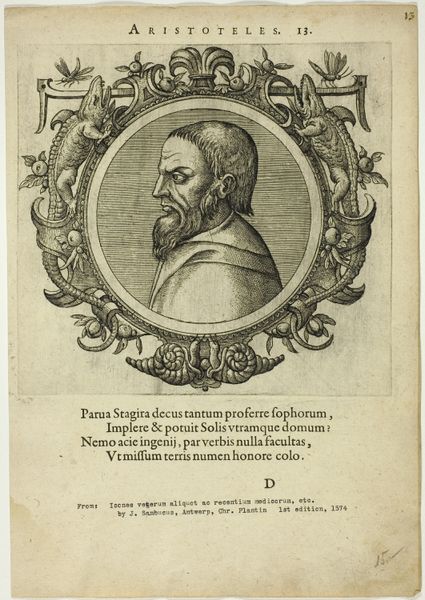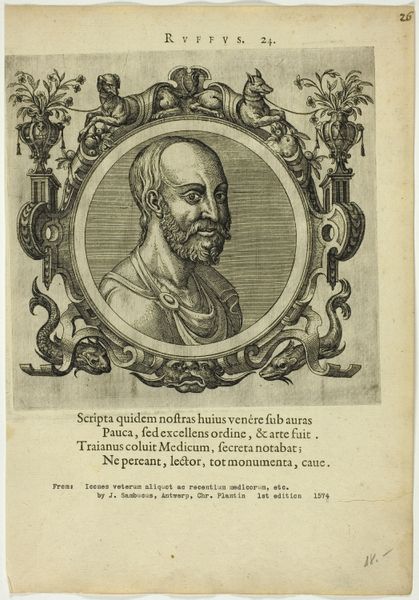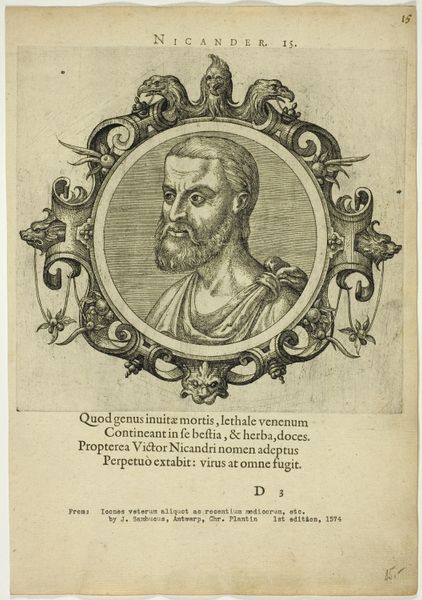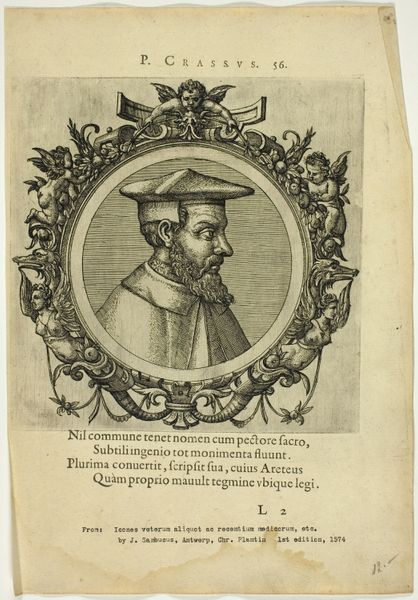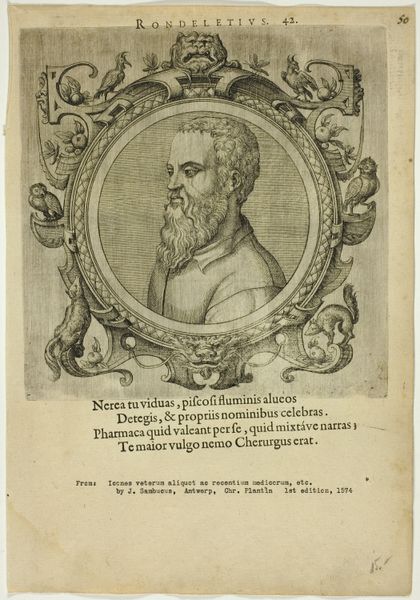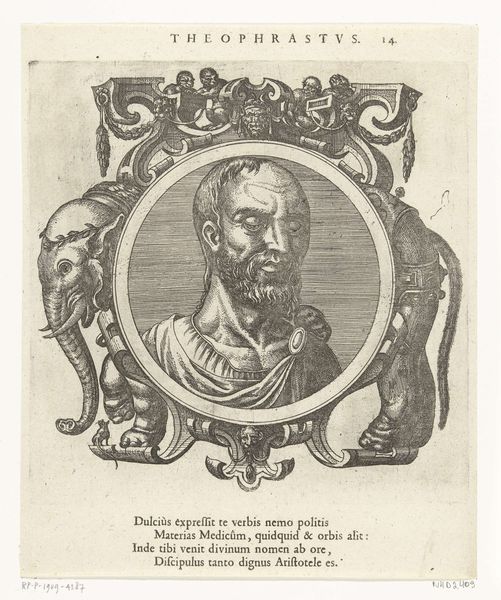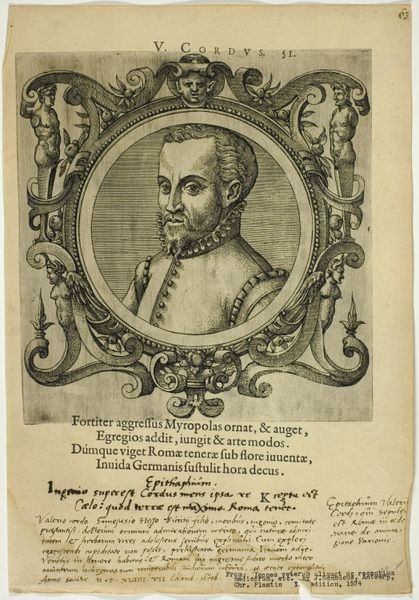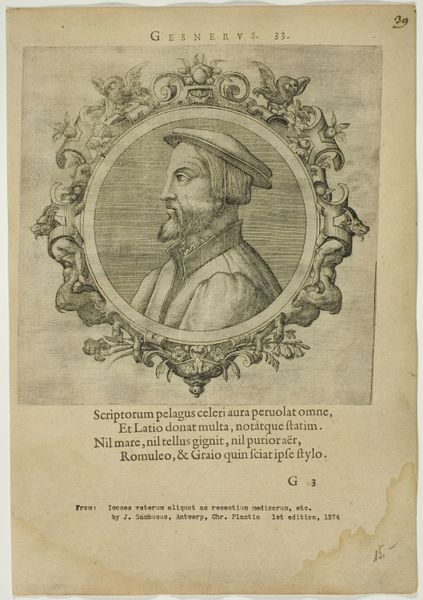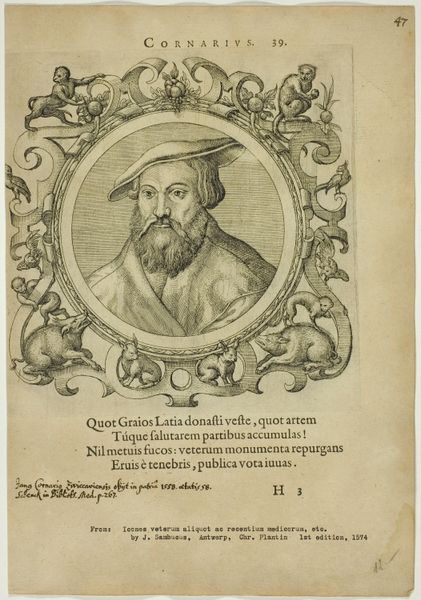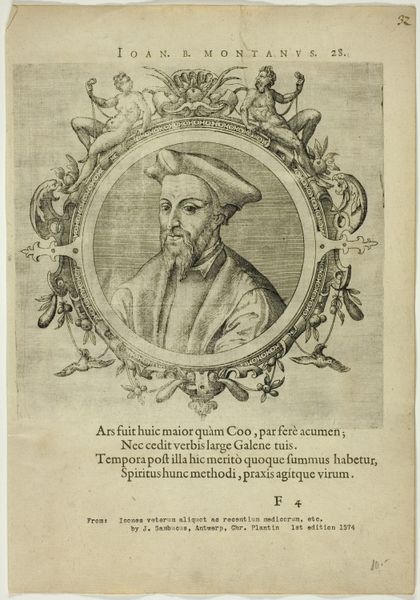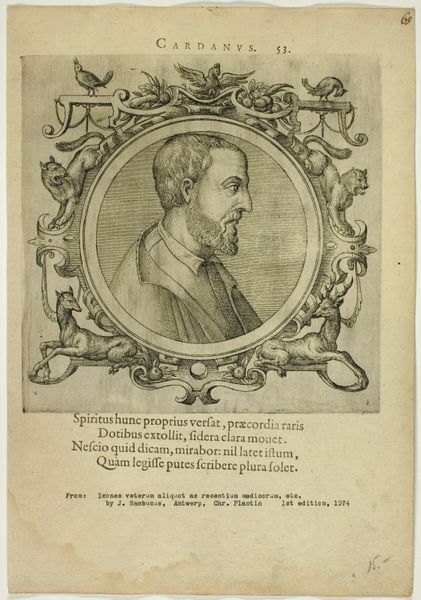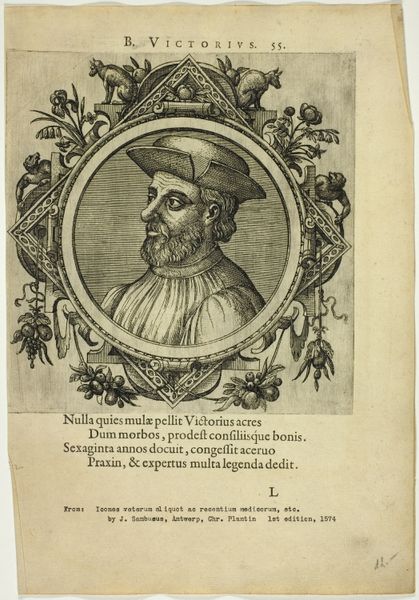
drawing, print, etching, paper, engraving
#
portrait
#
drawing
#
medieval
# print
#
etching
#
paper
#
history-painting
#
northern-renaissance
#
engraving
Dimensions: 196 × 202 mm (image/plate); 312 × 216 mm (sheet)
Copyright: Public Domain
Curator: This engraving, dating back to possibly 1574, presents a "Portrait of Galenus." It's attributed to Johannes Sambucus and currently resides in the Art Institute of Chicago. What are your initial thoughts? Editor: Stark. The use of stark black ink gives a sharp and direct presentation. The subject seems serious and thoughtful, which resonates, knowing his historical significance. Curator: Indeed. The choice of print as a medium speaks to accessibility and dissemination of knowledge, aligning with Galen’s role as a physician and philosopher whose work was influential for centuries. The very act of reproducing his image echoes a desire to spread his ideas widely, but I also see classical elements woven into its very framework through the details added to its oval portrait, like emblems and ornamentation. Editor: And I think we have to think about WHO had access. Even the proliferation of the printed image could only travel among a very limited set of literate elites. Did the symbolism, then, represent a specific ideological position as well, creating access only for certain political alignments? I see Galen not as an image to be spread among "the people" so much as he becomes a totem of power in his own right, a claim on legacy by association. Curator: That’s a crucial point. The inclusion of Latin text reinforces the elitist, educated audience. And the ornate framing—birds and decorative motifs—almost canonizes him within the context of the time. Note the detailed rendering of his beard and the folds of his robe; such details speak to his scholarly status. Editor: Exactly, but the sharp, almost severe lines contribute to a sense of authority. Galen wasn't just a scientist; he was a figurehead within systems that had great socio-political ramifications. It raises the question—whose history is being promoted, and at whose expense? This work feels very much concerned with power and legacy. Curator: I agree. By positioning Galenus in this formal, almost heroic manner, Sambucus acknowledges the importance of this classical knowledge and reinforces Galenus as a cornerstone for future medical study. Editor: A great case study in how visual media participates in creating intellectual legacies and supporting or challenging specific power systems! The work has many interpretive layers, both on Galen's portrait as the central focus and on its position within its particular social order. Curator: Yes, a small yet potent snapshot of a world in flux, wrestling with the weight of history and the promise of new ideas.
Comments
No comments
Be the first to comment and join the conversation on the ultimate creative platform.
